Signs of
estrus
in lorises and pottos
See also determination
of sex
Estrus in lorises and pottos
can
usually be recognized by increased opening of the vagina; parts
of the
genital region becoming slightly turgid and reddish. Captive
females can
be trained to allow regular control with a torchlight while
clinging to
wiremesh getting some titbits.
Besides visible changes of
female
genitalia, behaviour of the male clearly indicates estrus: in Loris,
frequent appeasing "krik" vocalisation, pursuit of the female,
attempts
to sniff her genital region and attempts to mount can be
observed. During
pre-estrus, defensive chitter of the female often is the first
behaviour
noticed by keepers.
Slender loris (L. tardigradus, L.
lydekkerianus)
female
.
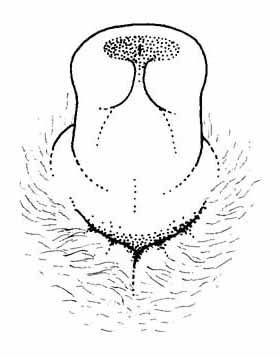 |
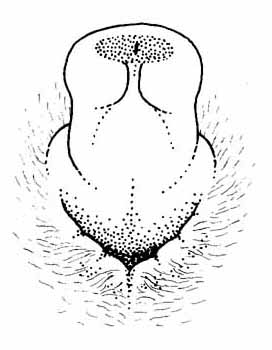 |
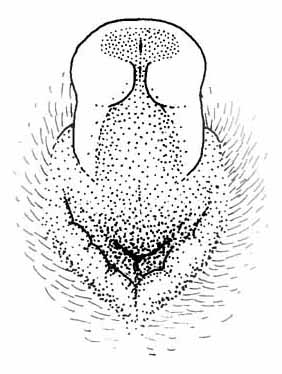 |
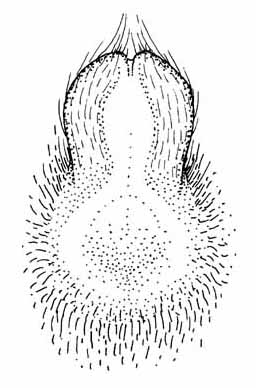 . . |
| Signs of anestrus in a
L. t. nordicus
female. The vaginal cleft is more or less closed, the rims
look normal
and yellowish |
In pre-estrus, the
vaginal cleft begins
to open more widely, the surrounding tissue is still
looking normal. Sexual
interest of males increases (sniffing, krik calls,
pursuit) |
Signs of estrus: the
vagina is open, the
rims and parts of the clitoris look turgid and reddened. |
Sealed vagina
in a small red slender loris female, probably tardigradus
or an
intermediate tardigradus-grandis form. A sealed
vagina is closed
with no apparent cleft visible and may lead to erroneous
sexing of the
animal as a male. The condition may occur during
anestrus or pregnancy;
it has been observed in the red loris forms and in Nycticebus,
but
not in the captive L. t. nordicus in the
facility of Ruhr-University. |
| Estrus signs are
not always clearly
distinguished as shown above; the degree of opening of the
vaginal cleft
may in addition vary with movement, distinction is
possible on the average
only. Reddening of the vaginal rims and apparent sexual
interest of males
are clearer signs. |
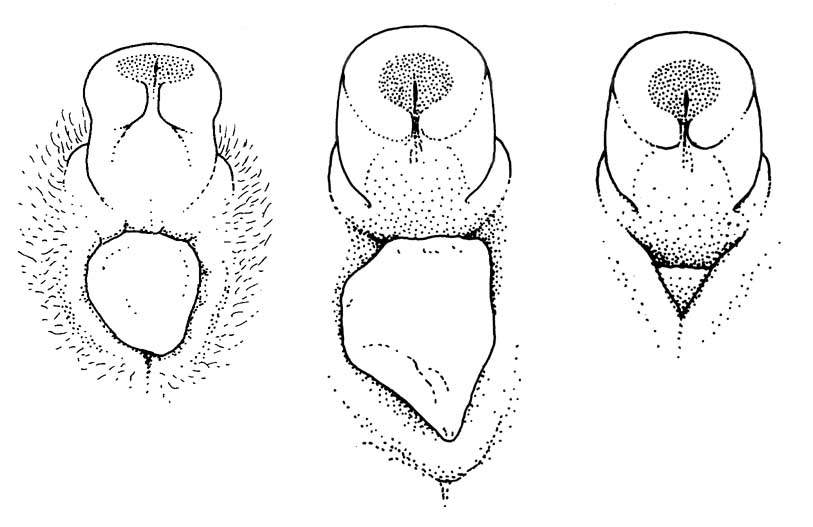 |
| After copulation,
a vaginal plug
may be visible in the vagina. It forms by hardening of a
liquid apparently
produced by the male; its purpose may be prevention of
loss of sperm, prevention
of copulation of the female with other males or possibly
both. Observation
showed unsuccessful attempts of a male to copulate once
more with a female
whose vagina was already closed by a plug from an earlier
copulation. Size
and shape of plugs may vary, here some examples. In L.
t. nordicus
the plugs are white to whitish-translucient. The female
removes the plug
with the teeth after some time, usually next day it is
gone. |
Slender loris male
.
| Signs of sexual activity in slender loris males rather
seem to be behavioural
than morphological ones (pursuit, sniffing of the female
genitalia, following,
appeasing "krik" calls, attempts to mount). In captive L.
t. nordicus
at Ruhr-University, external visibility of testes of adult
males varies,
they may be partly inguinal, with flat and inconspicuous
scrotum, or move
into the scrotum, making it more prominent. In addition,
the size of scrotum
with testes inside may vary, see figures in the page about
determination
of sex. Which part of genitalia cause the
enlargement is still
unknown. At Ruhr-University enlargement of testes were
observed when ambient
temperatures were high, testes apparently helping to emit
heat; no correlation
with sexual activity was observed. Osman Hill confirmed
that a captive
slender loris male has sired offspring while his testes
were inguinal and
inconspicuous. |
Lesser slow loris (Nycticebus pygmaeus)
female
.
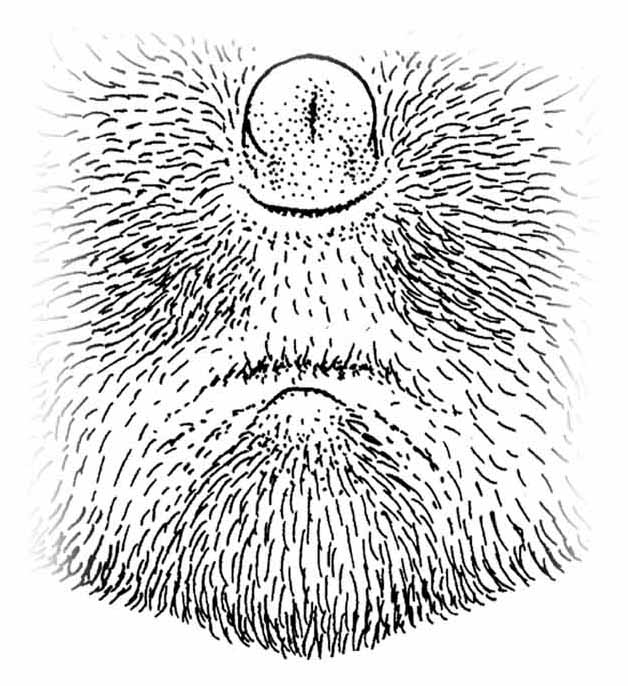 |
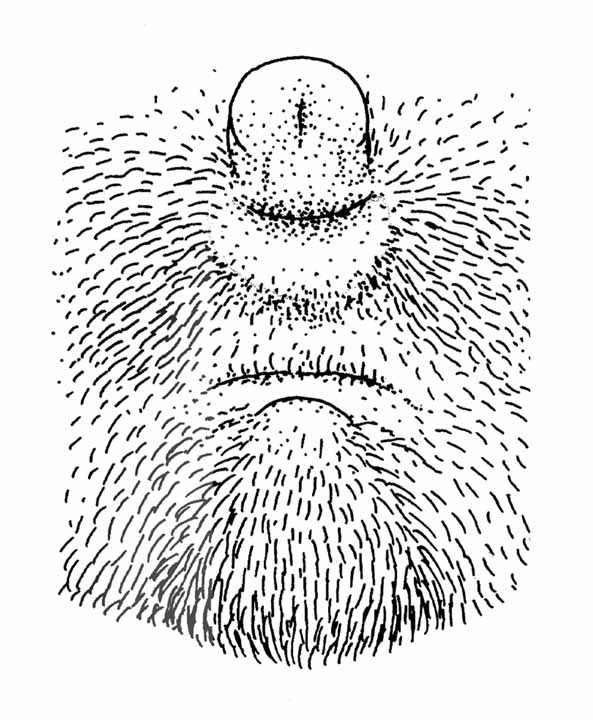 |
.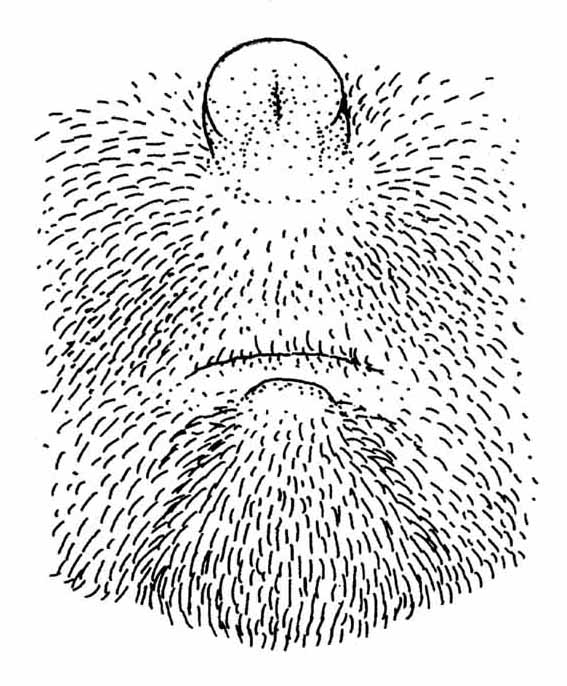 |
| Female external genitalia of a
N. pygmaeus
female during anestrus. |
During estrus, the
surroundings of the
vagina are partly turgid. |
.Sealed
vagina |
Slow loris (N. coucang, N.
bengalensis, N. (c.)
javanicus) female
.
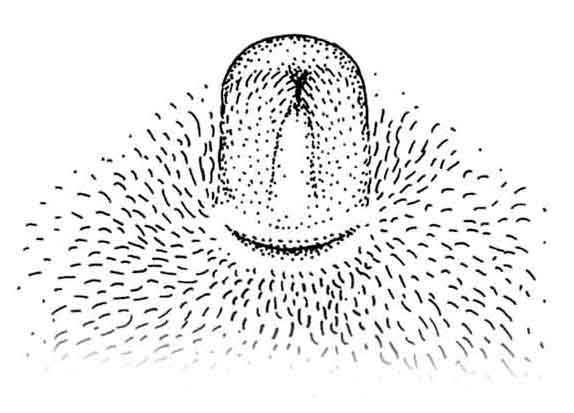 |
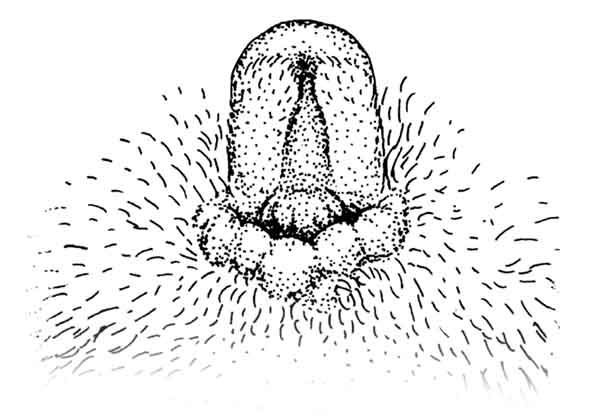 |
.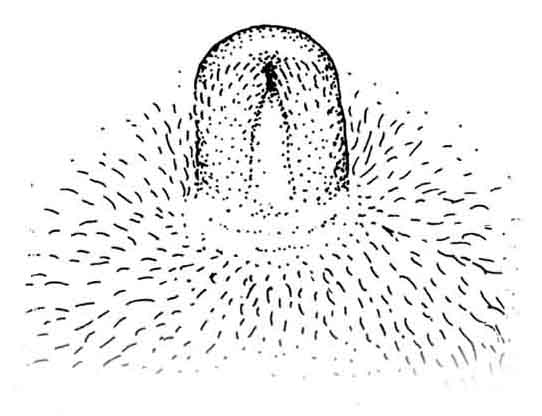 |
| Anestrus |
Estrus |
.Sealed
vagina |
Potto (P. potto) female
.
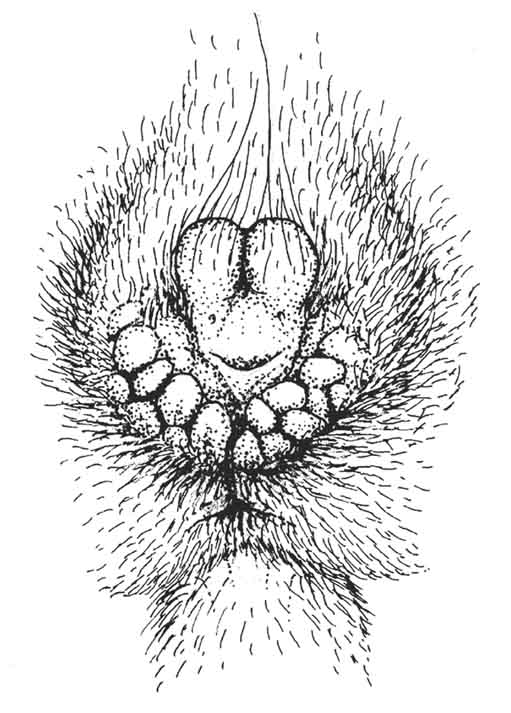 |
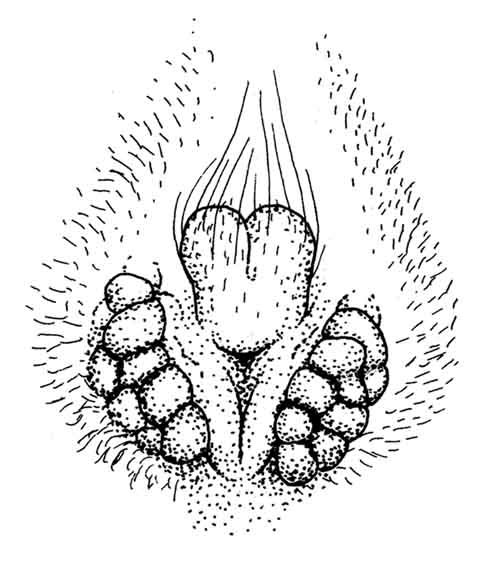 |
| Anestrus |
Estrus |
Sources: Loris
tardigradus:
data
from Ruhr-University and Osman Hill 1953; animals belonging to
the red
subspecies obtained from Frankfurt Zoo. Nycticebus pygmaeus:
drawings
based on photos by Helena Fitch-Snyder, Rüdiger Lippe, Bernhard
Meier,
Helga Schulze and live animals in the care of R. Lippe. Nycticebus
coucang:
drawings based on photos by Frank Wiens and Annette Zitzmann
(wild
N.
c. coucang, Malaysia), Helena Fitch-Snyder and Karen
Weisenseel and
estrus sign description by Manley 1966. Perodicticus potto:
based
on Osman Hill 1953, Sanderson 1940, Charles-Dominique 1966 and
1977, Manley
1966 and 1976
References:
Charles-Dominique, P.,
1966:
Glandes préclitoridiennes de Perodicticus potto. Biol.
Gabon. 2: 355-359
Charles-Dominique, P.,
1977:
Ecology and Behavior of Nocturnal Primates. Prosimians of
Equatorial West
Africa, Duckworth, London.
Osman Hill, W. C.,
1953:
Primates: Comparative anatomy and taxonomy. Vol. I,
Strepsirhini. Edinburgh
University Press, Edinburgh.
Sanderson, I. T.,
1940: The
mammals of the north Cameroon forest area. Transactions of the
Zoological
Society of London 14: 623-725
Manley, G. H., 1966:
Reproduction
in lorisoid primates. Symposia of the Zoological Society of
London 15:
439-509
Manley, G. H., 1976:
Functions
of the external genital glands of Perodicticus and Arctocebus.
Pp. 313-329 in: Prosimian Behaviour, Martin, R.D.; Doyle, G. A.;
Walker,
A. C. (eds.), Duckworth, London.
Privacy policy / Datenschutz
Back to the top of this page
| Lorises
and pottos: species, subspecies, local populations |
Last
amendment: 28 March 2004
|



 .
.







